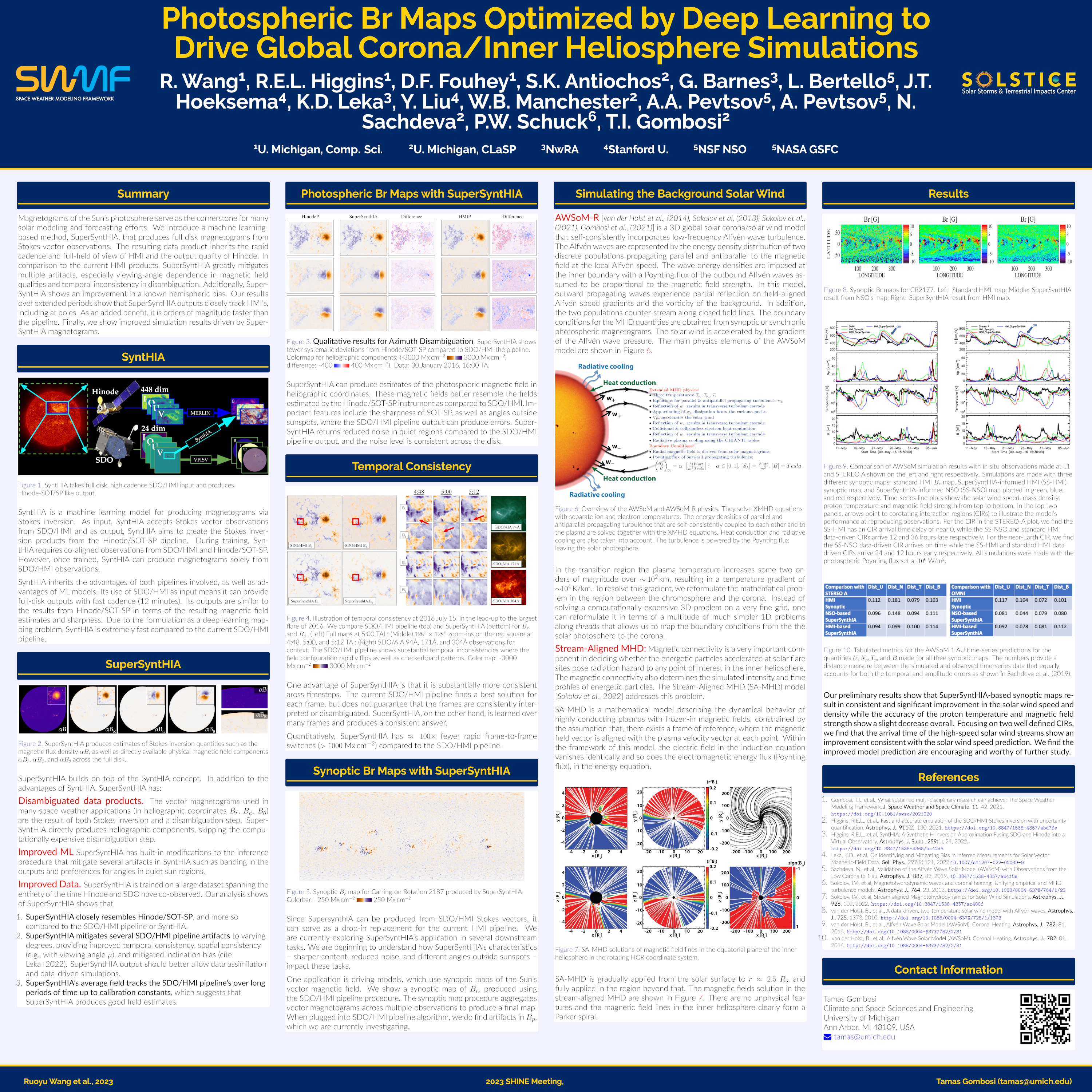Authors: Ruoyu Wang (University of Michigan Computer Science), Richard E. L. Higgins (University of Michigan Computer Science), David F. Fouhey (University of Michigan Computer Science), Spiro K. Antiochos (University of Michigan Climate and Space), Graham Barnes (NorthWest Research Associates), J. Todd Hoeksema(Stanford University), K. D. Leka (NorthWest Research Associates), Yang Liu (Stanford University), Peter W. Schuck (NASA GSFC), Ward Manchester (University of Michigan Climate and Space) and Tamas I. Gombosi (University of Michigan Climate and Space)
Magnetograms of the Sun’s photosphere serve as the cornerstone for many solar modeling and forecasting efforts. We introduce a learning-based method, SuperSynthIA, that produces full disk vector magnetograms from Stokes vector observations. The resulting data product inherits the rapid cadence and full-field of view of HMI and the output quality of Hinode. In comparison to the current HMI products, SuperSynthIA greatly mitigates multiple artifacts: viewing-angle dependence in magnetic field qualities, temporal inconsistency in disambiguation, and 24-hour oscillations in field strength. Additionally, SuperSynthIA shows an improvement in a known hemispheric bias. Our results over extended periods show that SuperSynthIA outputs closely track HMI’s, including at poles. As an added benefit, it is orders of magnitude faster than the pipeline. Finally, we show improved simulation results driven by SuperSynthIA magnetograms.


